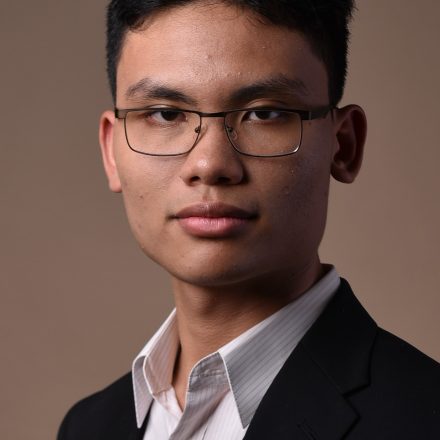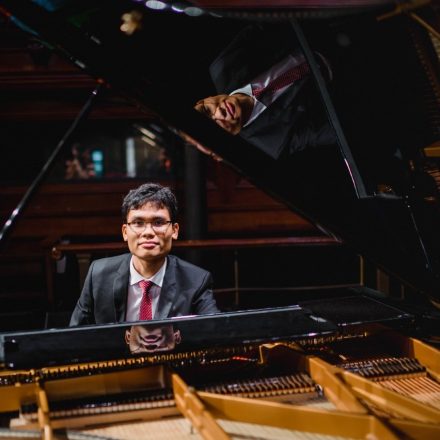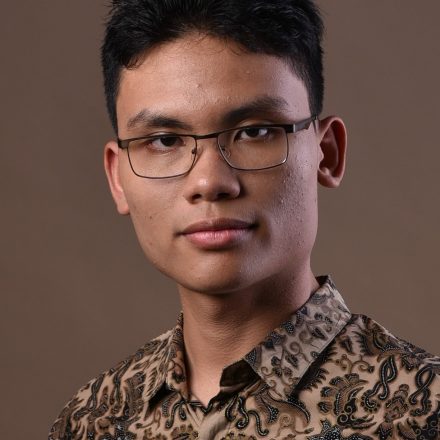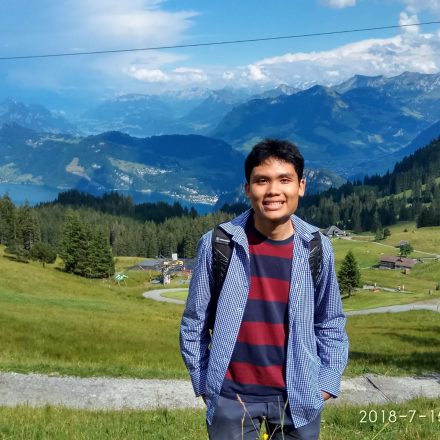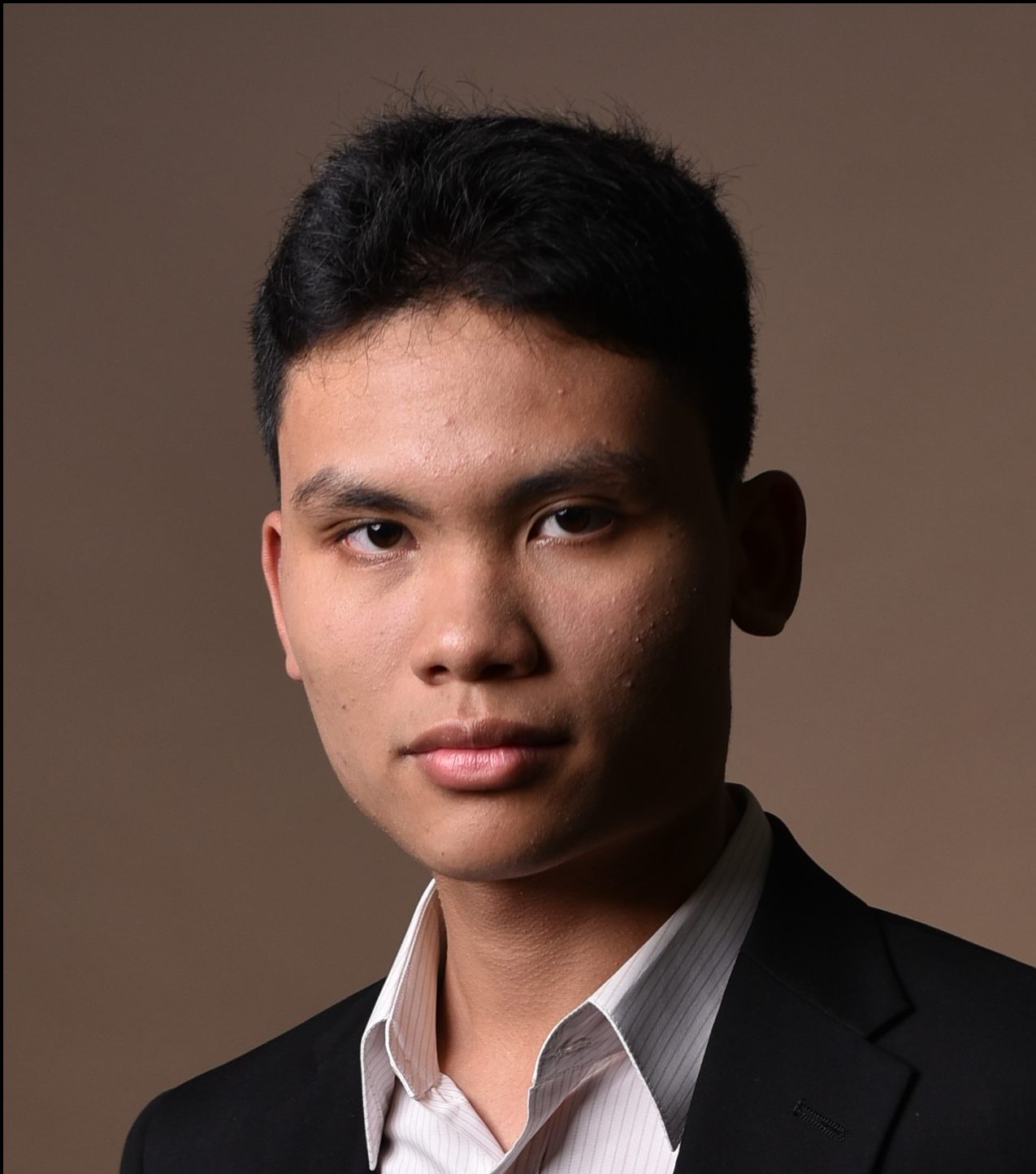
Background
Prizes
Calvin Abdiel is currently pursuing his Bachelor of Music (Performance) Degree at the Sydney Conservatorium of Music, studying piano under Natalia Ricci. He has received masterclasses in Australia from such acclaimed pianists as Angela Hewitt, Orli Shaham, Ingar Rose and Ingo Dannhorn, Justas Dvarionas, Michael Endres, Andrzej Pikul, Helen Krizos and Vyacheslav Gryaznov – as well as in Singapore and Indonesia with pianist and conductor Jahja Ling. In 2019, Calvin won the Sydney Conservatorium of Music’s George and Margaret Henderson Scholarship, which allowed him to attend further masterclasses in Weimar and Portugal with renowned pianists Ferenc Rados, Dénes Várjon and Boris Berman.
Competition successes led to his orchestral debut with the St Petersburg State Capella Symphony Orchestra and subsequent performances with the Queensland Symphony Orchestra and the Swiss orchestra Les Chambristes. He has also performed in Indonesia, Germany, Denmark, and Israel. He has been broadcast by ABC Classic FM and Fine Music Sydney.
SEMI FINAL PROGRAM THEME
In this recital I will be taking you on a colourful musical journey through Spain and giving you a taste of some of the greatest composers of Spanish keyboard music spanning 4 centuries, from Scarlatti to de Falla.
Granados
The first set begins with two works of Enrique Granados, from his famous Goyescas suite, written between 1909 and 1911 and inspired by the art of the great Spanish painter Francisco Goya. In 1896 during the 150th anniversary celebration of the great Spanish painter’s birth, Enrique Granados wrote to the pianist Joaquín Malats “I have fallen in love with Goya, with his psychology, his palette,”, … In Goyescas, Granados intended to capture, in his own words “a mixture of bitterness and grace” and “rhythm, colour and life that are typically Spanish”; and to evoke the passion, drama and tragedy portrayed in the works of Goya.
The collective title of the piano suite is Goyescas, o Los majos enamorados. The majos in the title refer to the working-class stratum of Spanish society, particularly in Madrid, noted for their flamboyant outfits and saucy attitudes, and who were frequent subjects of Goya’s paintings.
The Goyescas suite was so successful that the Paris Opera contracted Granados to create an operatic version of it, the plot of which was set in Goya’s Madrid at the end of the 18th century. I have decided to begin my recital with the El Pelele, the piano version of the opening orchestral music to the opera, which sets the stage for the action to follow. El Pelele, although not part of the original Goyescas suite is often played together with the rest of the set and was inspired by a tapestry cartoon of Goya’s (“The Straw Man”). This portrays 4 young women (the ‘majas”) playing a game in which they joyfully toss a life-size straw manikin (representing a rejected suitor) into the air from a blanket that they held at the corners as a kind of trampoline. The piece conveys an atmosphere of irrepressible merriment and giddy exuberance. Granados uses a refined and ironic musical treatment, using simple harmonies and a major tonality to reflect the bright colors, facial expressions and playful mood of the majas. The abundant trills and ornamentations throughout the piece suggest the frilly rather extravagant dresses of the four majas and their frivolous antics. The rising and falling melodies, combined with a repeated rhythmic motive and bouncing staccato articulations, evoke the image of the mannequin being tossed up and down on the blanket.
El Fandango de Candil (the fandango by candlelight) although not directly inspired by a Goya painting, suggests a couple dancing by candlelight to the infectious, ever-present rhythm of the fandango, a traditional Spanish courtship dance accompanied by guitars, castanets, ‘palmas’ (hand clapping), snapping of fingers and stamping of feet. The introduction emphasizes the rhythmically-accented zapateado (foot -stamping) of the Spanish dancers, with the triplet figuration suggesting the snap of the castanets. The persistent triplet rhythms of the fandango permeate the piece, enlivening Granados’s harmonically rich and elegant canvas, unifying the entire movement and gradually building tension that finds release only at the conclusion. The scene is suffused with nocturnal revelry.
Scarlatti
The first significant composer of Spanish keyboard music was in fact an Italian, Domenico Scarlatti who was born in 1685 and raised in Italy but lived most of his working life in Spain in the service of the Spanish royal families. Scarlatti was the first to employ Spanish characteristics in his keyboard compositions and was a huge influence on many Spanish composers that followed him. His important output was a total of around 550 sonatas written for the harpsichord. At the time, the royal court moved about various cities of Andalusia. Apparently, the very striking folk music of this region made an indelible impression on Scarlatti and consequently many of his sonatas reflect the distinctive, exotic sounds associated with Andalusian folk music. These Spanish influences include: figurations suggestive of the guitar, characteristic phrygian and Moorish scales, drum beats, and rhythmic figures suggesting dances such as the bulerias, petenera and jota.: the repeated chords, with dissonant percussive acciaccature, in the Sonata in A minor K175 that I am playing today allude to the strumming of a guitar or perhaps the rattle of a tambourine.
Scarlatti treated the harpsichord in a highly idiomatic manner: rapid and brilliant scalic figurations, wide leaps, rapid repeated notes, and hand-crossings all contribute to his unmistakable keyboard style.1His sonatas often requires great skill and virtuosity on the part of the performer.
Soler
Following on from Scarlatti in my recital and continuing the theme of great Spanish keyboard composers through the ages, it seems fitting to present a sonata by Antonio Soler who was born in Catalunya and was one of Spain’s chief keyboard composers in the eighteenth century. In fact, when Scarlatti died in 1757, Soler took over his duties as keyboard tutor to the royal family and as the supplier of sonatas for Scarlatti’s pupils. He is most famous for his keyboard sonatas of which he wrote over 200. These make an important contribution to the early keyboard repertoire and are often compared to those of Scarlatti with whom he is believed to have studied. Soler was certainly influenced by Scarlatti’s compositions and his sonatas incorporate many Spanish idioms such as characteristic dance rhythms, dotted rhythmic figurations, syncopated melodic motives, combinations of duple and triple rhythmic patterns, the use of the minor second, and frequent imitations of the sounds of castanets, guitars and footwork. (zapateado)
Albeniz
Among the pioneers of this Spanish nationalist musical revival was Isaac Albéniz, one of the greatest pianists and composers to emerge from this country, whose compositions encapsulate the spirit of Spain. Albéniz’s contribution to the Spanish musical renaissance at the end of the 19th century was enormous as, through his compositions, he instigated the rebirth of nationalism in music. Albeniz represented the voice of his country and produced some of the most extraordinary compositions ever written for the instrument.
The two compositions of Albéniz that I will be playing tonight are from his great masterpiece, the Iberia suite , without doubt one of the greatest works of the piano literature. He began composing the suite in 1905 and completed it 3 years later, not long before his death the following year. The suite is made up of four books, each containing three pieces, however it is very rarely performed in its entirety due to its extraordinary difficulty. Each of the pieces in the suite evokes a particular Spanish city, festival, or song and dance, and has very distinctive musical traits that capture the Spanish spirit. Although Albéniz did not adhere strictly to the particular forms of flamenco and other traditional dances that many of the pieces are named after, he was certainly inspired by them and integrated many of their formal and rhythmic elements, meters and general character of the dance genres into his compositions.
The suite is highly sophisticated in terms of its harmonic, rhythmic and textural complexity, , extensive dynamic range, and the enormous technical demand it places on its performers. It is so difficult in fact that Albéniz almost destroyed it, as he was afraid it was nearly impossible to play!
Corpus Christi en Sevilla (also titled Fête-Dieu à Seville), the last piece in Book I of Iberia, is an extraordinary musical portrayal of the annual Corpus Christi procession in Seville winding its way through the narrow streets of the old city in which the body of Christ is carried ceremoniously, accompanied by marching bands and throngs of followers and penitents .The piece opens with 4 drum rolls- a rataplan- signalling the start of the processional march.This is followed by a march-like theme, spiced up with jarring dissonances that grows louder and noisier as the procession continues. Eventually the march becomes overwhelmed by an evocation of a saeta, a piercing outcry or spontaneous lament of ecstatic religious mourning, freely improvised in the style of the ancient flamenco vocal tradition Cante Jondo. The saetas are sung during the Corpus Christi procession by solo singers perched on balconies overlooking the narrow streets of Seville and the procession below..
Albeniz uses a musical canvas of 3 staves to contain this musical panorama and to notate the layers of texture which are so far apart in register: the saeta is represented in striking fff octaves in the lower two staves, and the alternating chordal accompaniment in the high register of the piano above evokes the brilliance of rasgeado (a strummed flamenco guitar technique). Albeniz also resorts to a dynamic range from ppppp to fffff in this astonishing piece.!
The march and saeta alternate ever more loudly until the main march theme comes back as a lively tarantella that ends abruptly with a flamboyant fffff climactic chord; after which the piece concludes with a magical coda that evokes the still and starry night sky over Seville after the festivities are over, leaving us with distant church bells and faint strains of a flamenco guitar.
Eritaña is the last piece of the whole Iberia set and refers to the name of a popular inn, on the outskirts of Seville. The inn was constantly alive with flamenco performances and was a place where the locals and visitors would enjoy wild and colourful celebrations. It exhibits the lively rhythms of the sevillanas – a common Spanish folk dance and song which is frequently performed at Festivals and parties including the famous, Feria de abril de Sevilla. (the annual Easter Seville Fair). Unlike most of the other works in the suite, Eritaña does not contain a lyrical copla or refrain, instead the bright, vibrant dance rhythms permeate the entire work.
The musical texture is very dense with interwoven melodic lines passing between the left and right hands and a profusion of rich, percussive, added-note sonorities that add to the quirky, offbeat effect of the dance. They suggest the cacophony in a flamenco fiesta in which there is much stomping, clapping, finger-snapping, shouts of “olé”, singing and guitar playing.
Hallfter: Danza Gitana
We now leave Albeniz and Sevilla and move on to Ernesto Alberto Halffter who was born in Madrid on 16 January,1905.
Ernesto became de Falla’s closest and most recognised pupil and Falla became a spiritual guide and mentor for Ernesto. He opened many doors for him, assisting with the publication and performance of his music which he often corrected himself beforehand.
‘Danza de la pastora’ and ‘Danza de la gitana’ were written in 1927 as part of his ballet, Sonatina. The ballet was based on the plot of the well-known poem of the same name by the Nicaraguan poet, Rubén Darío, who was also one of Falla’s favourite poets and who inspired Falla’s Noches en los Jardines de España(‘Nights in the Gardens of Spain’). The music incorporates baroque forms with movements such as Rigaudon, Sarabande and Gigue. The movement I am playing tonight, ‘Danza de la gitana’ is characterised by dissonant harmony and evocative use of rhythm throughout the work. We hear not only the influence of Scarlatti but as well, the strong gypsy flamenco character of Falla’s piano works.
Manuel de Falla: Fantasia Baetica
This remarkable work draws on Falla’s knowledge and experience of the flamenco tradition and Andalusian culture and history. Provinicia Baetica was the old Roman name for Andalusia and so a translation of the title might be “Andalusian Fantasy.” Falla composed the Fantasia in 1919, at the close of his second Madrid period. It was commissioned by and dedicated to Arthur Rubenstein.
The weaving together of Gypsy, ‘Middle Eastern’, Sephardic, Indian and subtle French influences gives rise to a highly original harmonic language in this work. Guitar figurations and chords derived from guitar tunings abound and as well we hear the strident, sombre strains of cante jondo (literally translated as ‘deep song’) sung in oriental-sounding scales, and a pervasive harsh percussive quality reminiscent of castanets and heel stamping of flamenco performances. We can also hear passages evoking the paganistic driven rhythms of Stravinsky’s Rite of Spring. Stravinsky’s musical language whose status as a musical revolutionary resonated strongly with de Falla.
The fantasy is perhaps an unusual choice for a competition. It is not idiomatic writing for the piano and sits rather uncomfortably under the hand. However, it is one of the truly great works of the Spanish piano oeuvre and offers a marvellously varied and vigorous portrait of Spain.
For that reason I have chosen to end my Spanish musical journey with this Iberian Fantasy.
2021 Competition Performances
2021 Competition Repertoire
Preliminary Round
Preliminary Round
V. Les collines d’Anacapri
XII. Feux d’artifice
I. Russian Dance
II. Petrushka’s Cell
III. The Shrovetide Fair
X. Etude in D♭ major
Semi Final Round
Semi Final Round
III. El Fandango del Candil – Fandango by Candlelight
III. Fêté-Dieu à Séville
III. Eritaña
Final Round
Final Round
VIII. In dir ist Freude BWV 615
V. Ich ruf’ zu dir, Herr BWV 639
IV. Nun freut euch, lieben Christen BWV 734
I. Allegro moderato
II. Minuet – Trio
III. Finale. Presto
Book 1
I. Thema. Non troppo Presto
II. Variation 1
III. Variation 2
IV. Variation 3
V. Variation 4
VI. Variation 5
VII. Variation 6
VIII. Variation 7
IX. Variation 8
X. Variation 9
XI. Variation 10
XII. Variation 11. Andante
XIII. Variation 12.
XIV. Variation 13.
XV. Variation 14. Allegro
Book 2
XVI. Thema. Non troppo Presto
XVII. Variation 1
XVIII. Variation 2. Poco Animato
XIX. Variation 3
XX. Variation 4. Poco Allegretto
XXI. Variation 5
XXII. Variation 6. Poco più vivace
XXIII. Variation 7
XXIV. Variation 8. Allegro
XXV. Variation 9
XXVI. Variation 10. Veloce, energico
XXVII. Variation 11. Vivace
XXVIII. Variation 12. Un poco Andante
XXIX. Variation 13. Un poco più Andante
XXX. Variation 14. Presto, ma non troppo
I. Gamelan
II. Wayang-Purwa, Puppet Shadow Plays
III. Hari Besaar, The Great Day
III. Allegro molto
VI. Allegro
I. Allegro energico
II. Allegro vivace e leggiero
III. Adagio mesto
IV. Fuga: Allegro con spirito
II. Intermezzo. Andante teneramente
VI. Triana
